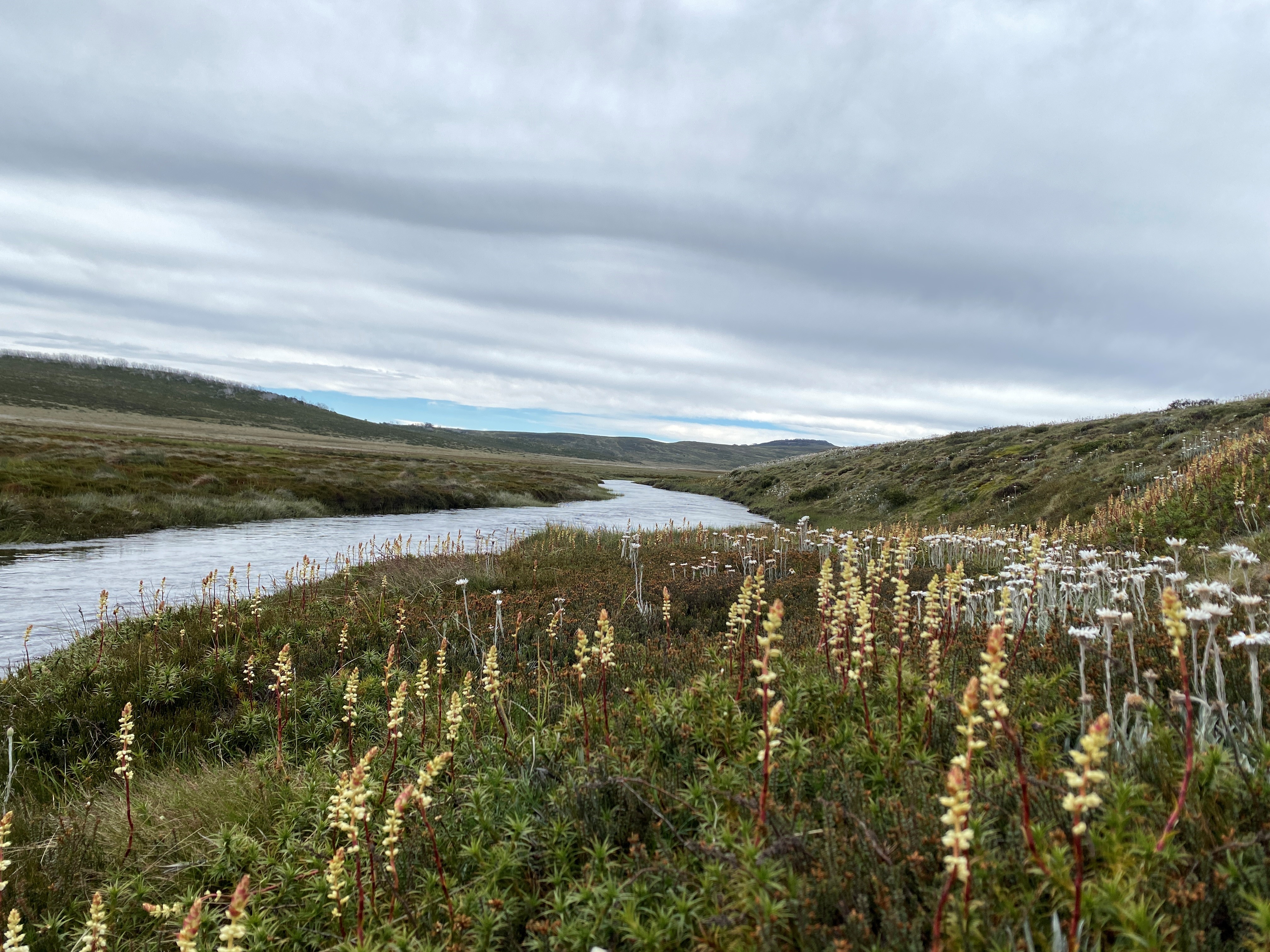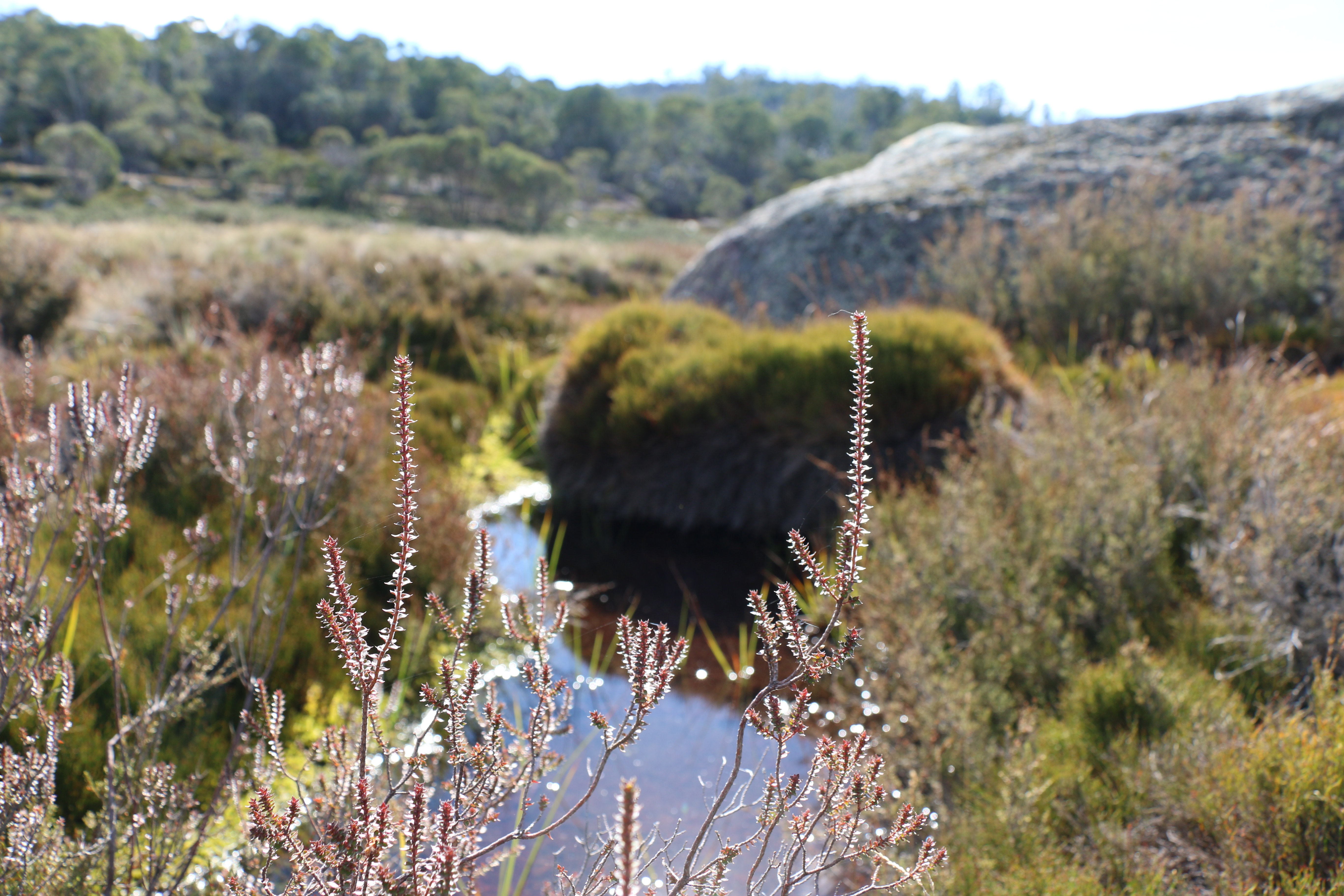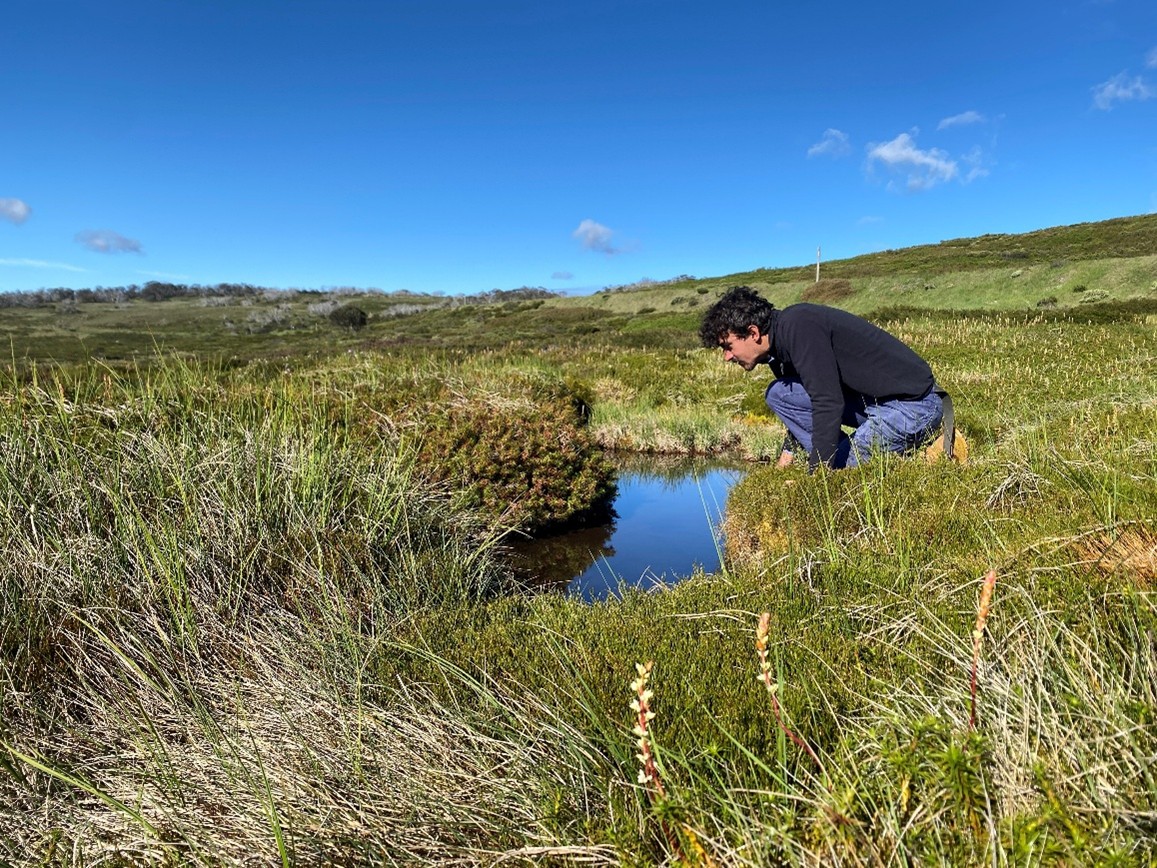The Alpine Peatlands

Photo: Jess Houghton, North East CMA
Alpine peatlands in Australia are unique ecosystems found in the high-altitude regions of the Australian Alps. These wetlands are characterised by their waterlogged conditions and the accumulation of peat and organic matter, which forms over thousands of years. Alpine peatlands play a crucial role in supporting the environment for several reasons:
-
Biodiversity Hotspots: Alpine peatlands are teeming with a rich diversity of flora and fauna. These habitats support many unique and endemic species that are specially adapted to the cold, wet conditions, making them essential ecosystems for conserving Australia’s biodiversity.
-
Water Regulation: Alpine peatlands function as natural water regulators. The peatlands' sponge-like properties allow them to absorb significant amounts of water during wet periods and slowly release it during dry times. This capability helps to maintain consistent stream flow, ensuring that downstream water bodies receive a steady supply of water even during droughts. By filtering and purifying the water, peatlands also contribute to higher water quality, benefiting both ecosystems and human communities that rely on these water sources.
-
Carbon Sequestration: Alpine peatlands are crucial carbon sinks, storing carbon dioxide in their thick peat layers. The cold, waterlogged conditions of these peatlands slow down the decomposition process, allowing organic matter to accumulate and sequester carbon over millennia. This makes alpine peatlands vital in the fight against climate change, as they help reduce the amount of greenhouse gases in the atmosphere. Protecting these ecosystems is essential to maintaining their role in carbon storage and mitigating the impacts of global warming.
Despite their importance, alpine peatlands face threats from climate change, human activities, and invasive species. Conservation efforts are essential to protect these delicate and vital ecosystems, ensuring they continue to provide ecological benefits for future generations.

Photo: Jess Houghton, North East CMA
Key Threats to the Alpine peatlands:
-
Climate Change: Warming temperatures and altered snow/precipitation patterns pose a significant threat to alpine peatlands. Reduced snowfall and early snowmelt can lead to drier conditions, which affect the waterlogged environment essential for peat formation and maintenance. Alpine peatlands are recharged through groundwater supplies which may become increasingly vulnerable in a long-term drier climate. Additionally, climate change can lead to increased frequency and intensity of extreme weather events, further stressing these delicate habitats.
-
Pest Animals: Pest animals can cause extensive damage through grazing and trampling, which leads to soil erosion and degradation of peatland vegetation. Their hard hooves compact the soil, reducing its ability to absorb water and support plant life. This degradation can result in increased carbon emissions from the peatlands, as disturbed peat releases stored carbon dioxide back into the atmosphere.
-
Invasive Species: Invasive plant species, such as willows and soft rush can outcompete native flora, altering the structure and function of the habitat. These invasive species can change the hydrology of the area by absorbing more water and reducing the water availability for native peat-forming species.
-
Human Activities: Recreational activities, and water infrastructure (aqueduct) projects pose significant threats to alpine peatlands. Recreational activities, such as hiking, skiing, horse riding and off-road vehicle use, can cause physical damage to the delicate peatland environment, leading to soil erosion and compaction. Pollution from these activities, including litter, chemical runoff, and sewage, can further degrade water quality and harm native species. Aqueducts can have a significant impact on peatlands by altering natural water flow. This can lower the water table in alpine peatlands leading to drier conditions that are unsuitable for the water-loving plants and animals that inhabit these ecosystems.
-
Fire: Fire is a natural part of many Australian ecosystems, but increased frequency and intensity of wildfires, exacerbated by climate change, pose a severe threat to alpine peatlands. Fires can destroy the vegetation that binds the peat together, leading to erosion and loss of peat layers. The destruction of peatland vegetation releases stored carbon into the atmosphere, contributing to greenhouse gas emissions and further exacerbating climate change. Additionally, post-fire recovery can be slow, and invasive species may quickly colonize the disturbed areas, hindering the regeneration of native flora.
Understanding the stark impacts of these threatening processes highlights the urgency required to protect and conserve Australia’s alpine peatlands.
About our project:
The North East CMA are in the middle of a 5-year recovery program to improve the condition of alpine peatlands across North East, East Gippsland and West Gippsland Catchments.
Between 2023-2028 this project will:
-
Improve the condition of alpine peatlands through targeted weed control across 300 hectares of alpine peatlands including Mount Buffalo, Bogong High Plains, Dinner Plain/Cobungra, Wonnangatta/Dargo High Plains, Baw Baw National Park, Nunniong Plateau.

Photo: Jess Houghton, North East CMA
Key Contacts
Jess Houghton, Project Officer Biodiversity jessica.houghton@necma.vic.gov.au
Phillip Falcke, Senior Project Officer Biodiversity phillip.falcke@necma.vic.gov.au
Helen Wilson, Manager NRM Delivery and Planning helen.wilson@necma.vic.gov.au
Sam Hagen, Community Support Officer Sam.hagen@necma.vic.gov.au
Telephone: 1300 216 513
Alpine Peatlands Protection Project
This video was developed by North East CMA to mark completion of the Alpine Peatlands Protection Project. Partners are Parks Victoria, East Gippsland CMA, West Gippsland CMA and Gunaikurnai Land and Waters Aboriginal Corporation. This project is funded by the Australian Government's National Landcare Program.
Acknowledgement
This project is funded by the Australian Government Natural Heritage Trust and delivered by North East CMA, a member of the Commonwealth Regional Delivery Partners Panel with support from project partners: Parks Victoria, Victorian Department of Energy, Environment and Climate Action, Gunaikurnai Land and Waters Aboriginal Corporation, Taungurung Land and Waters Council, Jaithmathang Traditional Ancestral Bloodline Original Owners Aboriginal Corporation, and La Trobe University.




